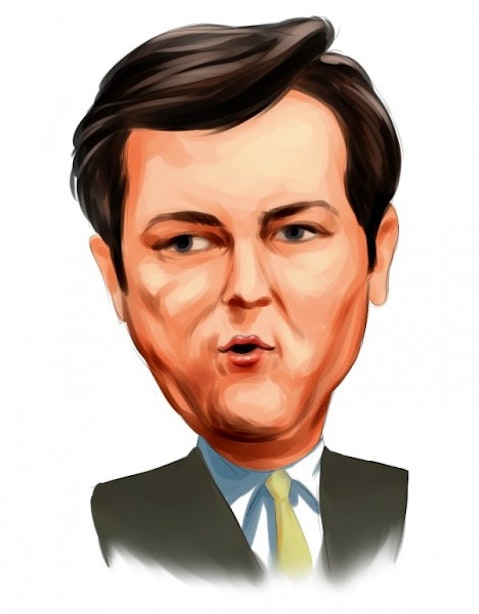As the favorite shopping spot of teenage, skinny-jean wearing hipsters, the U.S. based Urban Outfitters Inc. (NASDAQ: URBN) has been in the retail clothing business since the 70s, and URBN stock has been publicly available to investors since the days of Clinton and grunge rock. Interestingly, URBN was a single dollar stock until its shares skyrocketed to the $30 range in the early 2000s. This growth was primarily fueled by the company’s development of its online catalogue, and its focus on creating a comprehensive ‘lifestyle’ for customers. With only 400 store locations, Urban Outfitters is not the largest retailer of its kind, but it may be the nimblest, as its top line growth dominates most other competitors. Additionally, some of the world’s biggest hedge fund managers love this stock, which may be because multiple indicators signal that URBN is currently undervalued and the beneficiary of a favorable macroeconomic climate.
Concerning the company’s revenue, growth has been outstanding, as URBN’s 3-year average revenue growth is 10.5 percent. This is higher than the industry average of 4.1 percent, and key competitors like Abercrombie & Fitch Company (NYSE: ANF) at 6.1%, American Eagle Outfitters (NYSE: AEO) at 1.9%, Aeropostale Inc. (NYSE: ARO) at 7.5%, and Pacific Sunwear (NASDAQ: PSUN) at -12.7%. Additionally, URBN grew its E-commerce sales by about 30 percent last year, which was almost double the growth rate of the entire industry. Presently, the company’s web-based business accounts for one-fifth of the company’s total sales, and newly appointed CEO Richard Hayne has stated that this will continue to be a key focus going forward. More importantly, the company has established stores in Canada and Europe over the past two years; these areas are crucial to future success. So far so good for URBN, as they recently reported European sales growth of 33 percent for a total of nearly $75 million, making this region account for about one-tenth of the company’s total revenues.
Interestingly, the company’s cash hoard shrunk by 26 percent last year, which was cited by execs as the result of one-time inventory increase that should correct itself by next year. This figure is middle-of-the-road compared to its competitors: ANF (-6.9%), AEO (-37.3%), ARO (-51.1%) and PSUN (-14.6%). It is possible, however, that investors are unfairly valuing URBN’s decrease in cash flows, as its current P/CF ratio (15.6X) is significantly below its 10-year historical P/CF of 20.1X. Most importantly, the company seems to be undervalued when comparing P/E ratios, which measure the value that investors place on every dollar of a company’s earnings. In URBN’s case, its current P/E of 23.8X is less than its 10-year historical average of 29.0X, and less than competitors like ANF (35.6X), AEO (26.0X), and ARO (25.2X). Additionally, the company’s PEG ratio, which normalizes the company’s earnings growth, is a very low 0.8. In almost all cases, stocks with PEGs below 1 are undervalued, and a good bet to bounce upwards in the future.
As a whole, the apparel industry has generated a strong return of 28.4 percent over the past year, which places it in the tenth percentile of the entire economy. This growth has been attributed by lower-than-expected commodity prices and an increasing consumer demand for retail clothing as the economic recovery continues to progress. Companies like URBN face challenges in the future if cotton prices increase, but if the first few months of 2012 are any indication, there may be no need to worry for at least the rest of this year. Since January, the average price of a pound of cotton has dropped from $1.01 to $0.80, a dramatic drop – even more so considering prices were above $2 just one year earlier. Prices may stay below $1 in the short to intermediate-term as India just recently removed its ban on cotton exports. Considering this encouraging macroeconomic climate, and the combination of URBN’s favorable revenue growth and low valuation, it’s easy to see why the stock may be a good buy. Some of the most successful hedge fund managers have already gone long URBN, as Tiger cub Patrick McCormack, Maverick Capital manager Lee Ainslie, and Craig C. Albert all love this stock. On an aggregate level, hedge fund interest is increasing steadily; as of December of last year 19 managers were long URBN compared to 17 the previous quarter. For individual investors looking to add another stock to their portfolios, it might be a good move to buy shares of Urban Outfitters (URBN).
